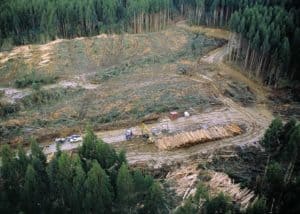The Environmental Protection Association has submitted consultation statements on the 3 applications for power development in Sandelva, Dukebotn and Jarlshaug in Samnanger municipality. As major interventions have already been made in the waterways in this region, the tolerance limit must be considered to have been reached. The power plants will be further unnecessary destruction of the country's unique watercourse nature.
The license applications are yet another application to continue the management of Norwegian watercourse nature. We have no shortage of power in Norway and therefore have no need to demolish further waterways. As these 3 power plants and they are built together would only be able to get an annual production corresponding to the power consumption of 1460 households, it is completely unacceptable to allow these interventions. Natural landscapes with areas that include undisturbed nature areas will be lost during development. In one of the waterways there is also a registered eel, which is a critically endangered species!
It is also consistent that they claim that they must prevent the loss of species in the watercourses with sufficient minimum water flow. The Danish Environmental Protection Association would like to point out that we have received photos and feedback many times that the minimum water flow appears to be breached. The Danish Environmental Protection Association would like to point out that there is always a risk of technical failure or planned failure which causes the minimum water flow to be broken. Bypassing the minimum water flow regulations means increased income for the power plant owner.
As in many other impact assessments, the assessments are characterized by the fact that the company that makes the assessments is paid by the initiative owner. In order to get new assignments from them and others in the future, they have an obvious vested interest in contributing to the acceptance of licensing cases. In order to prevent this lack of neutral assessment from continuing, it is necessary for the owners of the measures to pay a license fee, which the authorities then select a company responsible for the impact assessment. Such an arrangement would ensure neutral assessment as opposed to what we have today.



